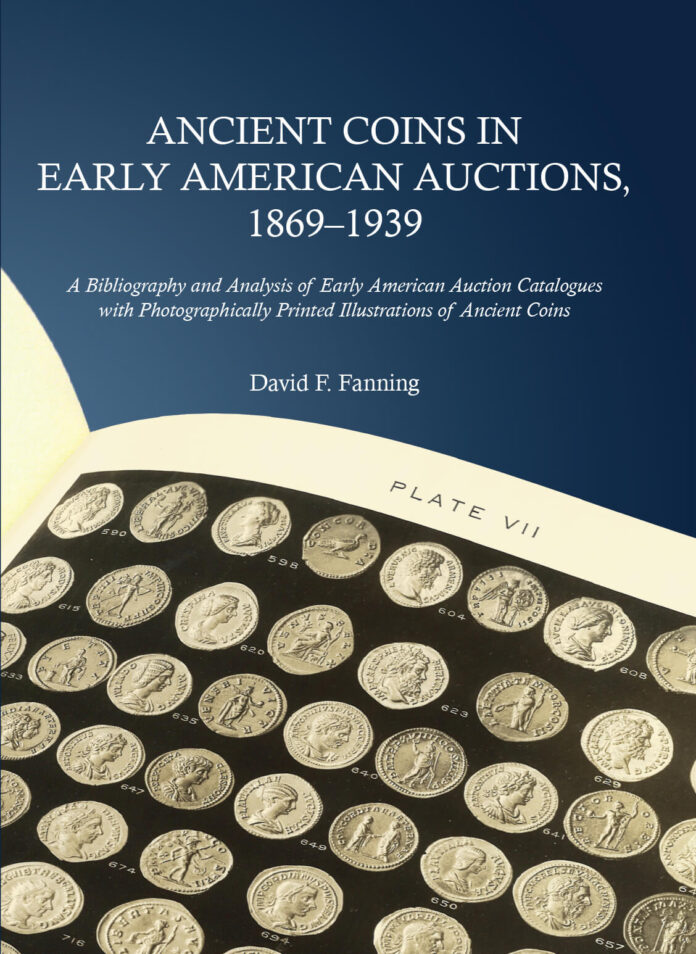
If you want to trace the provenance of an ancient coin back to the time before World War II, the American coin trade is probably not the first thing coming to mind. And yet, as early as during the War of Independence there was a large community of educated coin collectors in the USA who enthusiastically collected ancient issues, and, of course, there were also coin dealers providing them with the objects of their desire. David F. Fanning’s work recalls this almost forgotten episode and presents the most important coin dealers in the manner of an encyclopaedia.
A Dyed-in-the-Wool Bibliophile
If you ever visited the New York International Numismatic Convention, you know David Fanning. Together with his partner George F. Kolbe, he organizes an important literature auction sale in the context of this New York coin show taking place every year in January. Ever since he was a child, David Fanning has not only been interested in numismatics but above all in books and catalogues on this subject. He loves these books, knows how to tell stories about them and published many works in this field. Nevertheless, his latest book is something very special. It is highly topical due to the current discussion on cultural property protection: David Fanning demonstrates that dealing in ancient coins already took place at an early stage of the history of the United States of America.
Rare and With Just a Few Illustrations of the Most Precious Objects
In his book, David Fanning describes a phenomenon anyone seriously interested in provenance research knows all too well: photographs used to be very expensive. Often, the process began by making plaster casts from the objects that were to be photographed, which were then arranged on a table together with many other objects and a trained photographer took a picture of all of them. The fact that we can take pictures so quickly today makes us forget what a time-consuming art taking quality pictures of coins used to be.
That’s why most catalogues only depict a few of the listed items, regardless of whether the catalogue was published for a museum collection or for the sale of a private collection. Just think of the BMC catalogues containing the collection of Greek coins of the British Museum. In the first volumes, there are only a few plates depicting the most spectacular objects.
What’s more is that only a very limited number of auction catalogues were printed before the war – Herbert Cahn spoke in an interview with the author of this article of a maximum of 20 to 30 copies per auction (perhaps an understatement as one can hardly believe it from today’s perspective), which were sent to the most important fellow coin dealers. The coin dealers then invited their major clients to view the auction catalogues in their premises.
Therefore, it’s no surprise that only a few copies of these auction catalogues still exist. Even a distinguished expert such as John Spring, who wrote the standard work on auction catalogues before 1980, only knew a tiny part of the extensive American material that David Fanning compiled for the first time. Who would have imagined that almost 500 auctions took place in the United States as early as in the 1880s? However, only a few of these auctions focused on ancient coins. The author was able to identify 96 auctions selling considerable quantities of ancient coins including some important specimens. In addition, there were 21 auctions including ancient coins for which there are no illustrations.
People in the Coin Trade
The main part of the book is about American dealers involved in the trade in ancient coins. From B like Barney Bluestone to W like W. Elliot Woodward, David Fanning introduces the protagonists of the American coin trade, each with a photo, CV and company history. They are followed by auctions containing ancient coins, Fanning lists all bibliographical references and, in many cases, photo plates of the original catalogue were reproduced to give you an idea of which items were considered rare and spectacular at the time.
Thus, David Fanning’s work is an important contribution to research history. He demonstrates how many ancient coins already circulated in the United States 150 years ago. Because – this figure was also taken from an interview with Herbert Cahn – for every coin mentioned in an auction catalogue, there were more than a thousand items sold whose description wasn’t included in a catalogue.
Support the author and purchase the book on his website.
There you can also acquire a deluxe edition for bibliophile souls, only 10 copies of that edition were printed.




